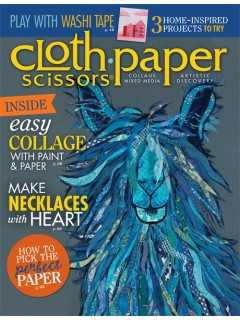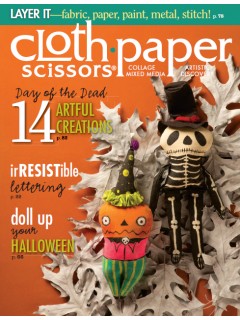As you know, I started working on this piece in January of 2015 and have been stitching on it, on and off ever since. When I put it away for a long rest in March or April of 2015, I thought at that time that it just needed one more thing - the rose.
But every time I pulled it out to put the rose on, something felt wrong about it. So I put it away for a long time.
This past summer, I pulled it out again, and realized it needed more stitching, not just the rose, so I got to work doing that. And then I put the rose on, but it felt like it was still missing something, so I added some beading.
I actually finished it (or so I thought) while BSP was in the hospital.
But when I got it home... well, it still felt like the message I was trying to convey wasn't getting across. I pondered it for a bit, and then wondered if I shouldn't be more literal. So I added the words, and suddenly, it felt complete. I printed them on translucent fabric, fused them on the piece and then stitched each letter down by hand, with invisafil.
I mounted it a few days later, but decided not to share it with you because I wanted to write something about it that was as powerful and meaningful as my feelings that went into the piece.
I've written and re-written, put things aside, written essays in different styles until it felt like I had written several treatises about it. But they all felt wrong.
So, I decided, simple is best. Here are my words, as they come to me, right now.
Approximately 2 years ago, I read an article on NPR about high end fashion and "fast fashion".
You may have heard the term in reference to The Gap, H&M, Old Navy, Zara...stores of that ilk. Usually it's presented in a neutral way, referring to the fact that consumers no longer want to wait for the "new styles" to come out in September, January and May, but rather, we want new things constantly.
The stores I've named above (and many others); decided to cater to that wish, and are constantly producing new styles, new things for their stores all year round.
The article I read talked about the hidden costs of fashion of all kinds - but particularly focused on high end fashion, and how the dyes and chemicals used to produce the luscious fabrics composing those expensive clothes cause cancer, blindness and birth defects in the workers who manufacture them in China, India, Pakistan, South America and Thailand. Hand-made laces and hand-beaded fabrics that used to be made by "Belgian nuns" are now made by children with nimble fingers, hunched over their work in tiny, hot rooms, literally chained to their tables for long hours in deplorable conditions as modern day slaves.
I thought that the children who spend their lives making these glorious fabrics in pain and misery must think of the Westerners who wear them as "beautiful monsters". Only monsters would require garments made of cloth with such a high human cost.
The NPR article also touched on the costs of fast fashion, but only as an aside. I was interested in learning more about fast fashion, so I read some more articles, and watched the documentary Ovcrdressed: The Shockingly High Cost of Fast Fashion.
It rocked my world, in a horrible way. I LOVE clothes. I love fashion.
But fast fashion is deplorable. The cost of our "disposable clothing": dollar store socks, $10 skinnies, $15 pants, Wal-Mart pajamas, all of the t-shirts, cute little dresses, sweaters and shirts that we wear for a season and throw away because they cost next to nothing, cost lives where they are manufactured.
The people are forced to work long hours for little or no pay ($2 for 12 hours of work is common) or sometimes are not paid at all if they don't meet quotas.
In India, children have literally been sold into slavery into the factories, where they are locked into the buildings in which they work. The cost of these cheap clothes from Wal-Mart and Old Navy are cancer, birth defects, suicides, maiming of their bodies due to malfunctioning machinery... everyone knows about the huge factory fire in Bangladesh in which 1,134 people were killed, but smaller factory fires happen at rate of a few per month.
Building collapses are common, and workers (mostly women and children) who try to escape or who seek better pay or conditions are beaten mercilessly and used as examples.
The chemicals used in dyeing and other manufacturing processes of the cheap fabrics used in these clothes not only cause cancers and birth defects in the workers, but are massive polluters of rivers and lakes, causing the same problems for people who live far away from where these clothes are made and contributing to the costs of pollution globally.
And there is a HUGE environmental cost of all of those "disposable" clothes. Too poorly made to last more than a season, even if donated, these clothes end up in landfills and are becoming a pressing problem, world-wide.
I have always taken a great deal of joy out of making my own clothes, dresses, skirts, blouses, slacks and suits for work. But since reading the articles and watching the documentary, I have been working towards making ALL of my clothes.
I was making approximately 70% of my clothes by this past spring; but this past summer, for the first time, I made my own jeans and sweatshirts and ventured into the world of knitwear: the result being that I am now making my own t-shirts, and have made turtlenecks and sweaters for fall.
I was making approximately 70% of my clothes by this past spring; but this past summer, for the first time, I made my own jeans and sweatshirts and ventured into the world of knitwear: the result being that I am now making my own t-shirts, and have made turtlenecks and sweaters for fall.
Recently, I have been learning how to make my own lingerie (slips, camisoles, and nighties); and just a few days ago, I purchased a couple of patterns for panties and my first hoodie. I hope to be up to 90% by the spring.
I know not all of us can make our own clothes. I know that not everyone can afford to buy expensive clothes - that for some people, buying clothes at Wal-mart is their only choice.
But for the rest of us... for *most* of us... we can make other choices.
We can we be willing to pay more for our clothes, be willing to own fewer of them, and be willing to wear something for a couple of years rather than a couple of months.
We can we take the time to find out where our clothes are made, do a little research and care about the human cost of what we put on our bodies.
It would take so little effort on our part, and would save lives in the short term and maybe, long term, help to save our planet.
If you're still with me, thanks for reading.
Talk soon,
Kit











Wow! What a powerful post. Thank you for shedding more light on this horrible truth.
ReplyDeleteThank you Kit for your message and your textile art conveying that message. Mary Ann
ReplyDeleteKit...to get such a strong narrative presented in a work of art, beautifully and successfully was well worth taking times of rest away from the work. The final piece is strong, deeply moving and thought provoking. I appreciate your narrative as well...Thank you for stirring my senses and helping me to hone my processes in considering my wardrobe choices.
ReplyDeleteWonderful, excellent work dear friend.
Kristin